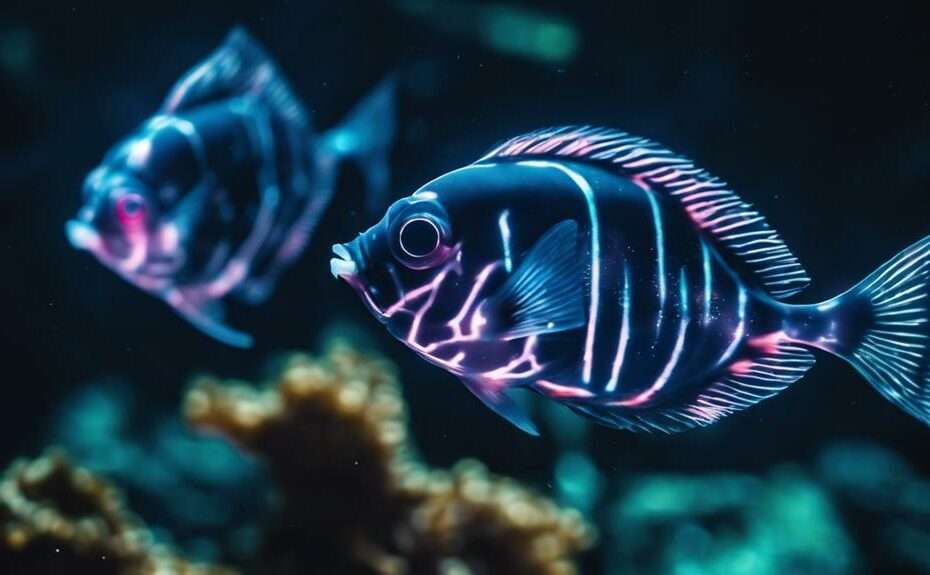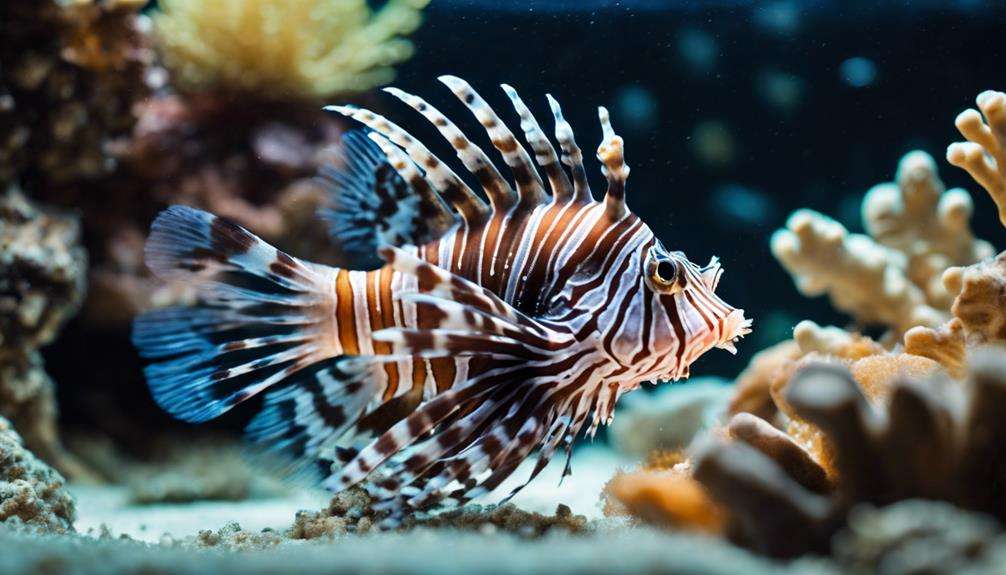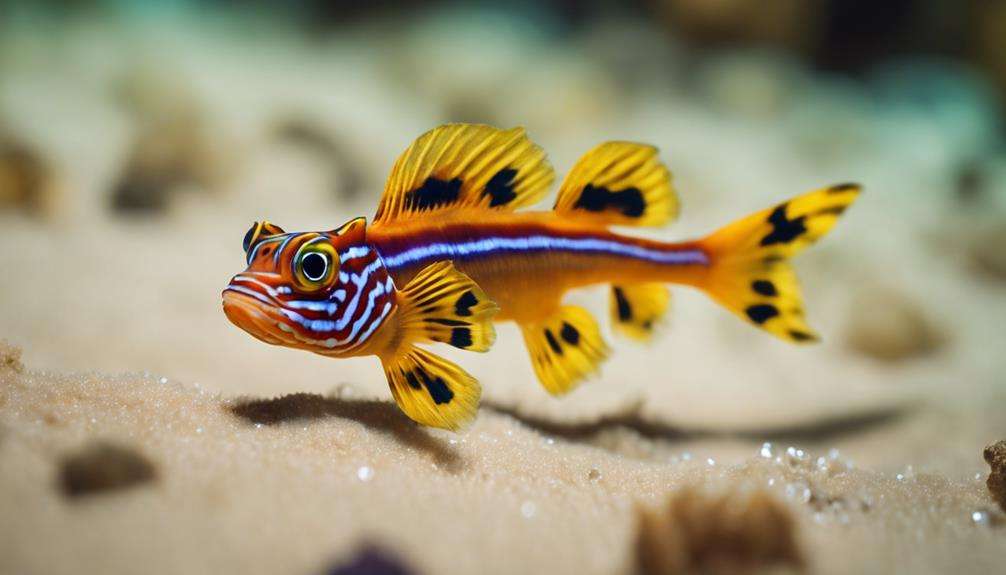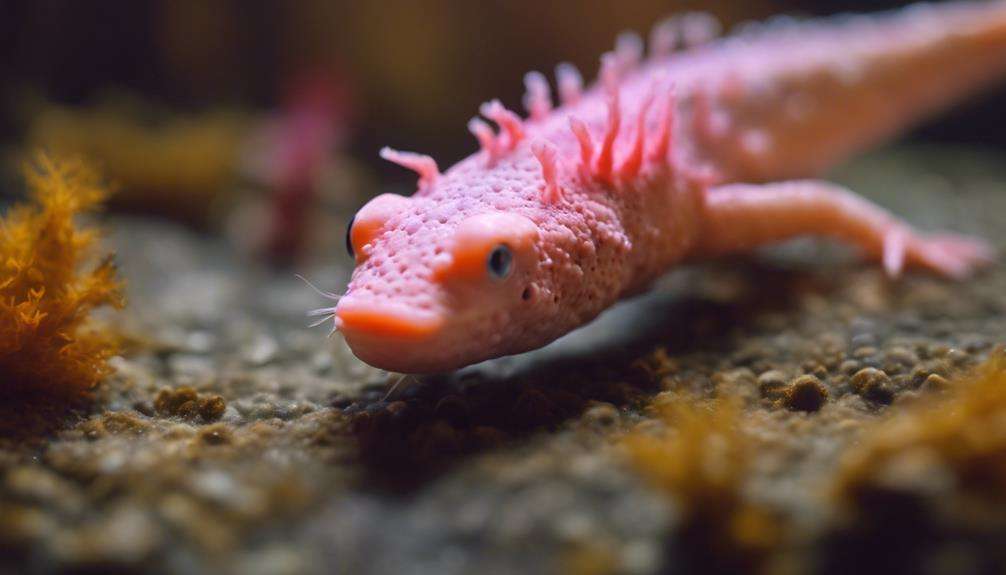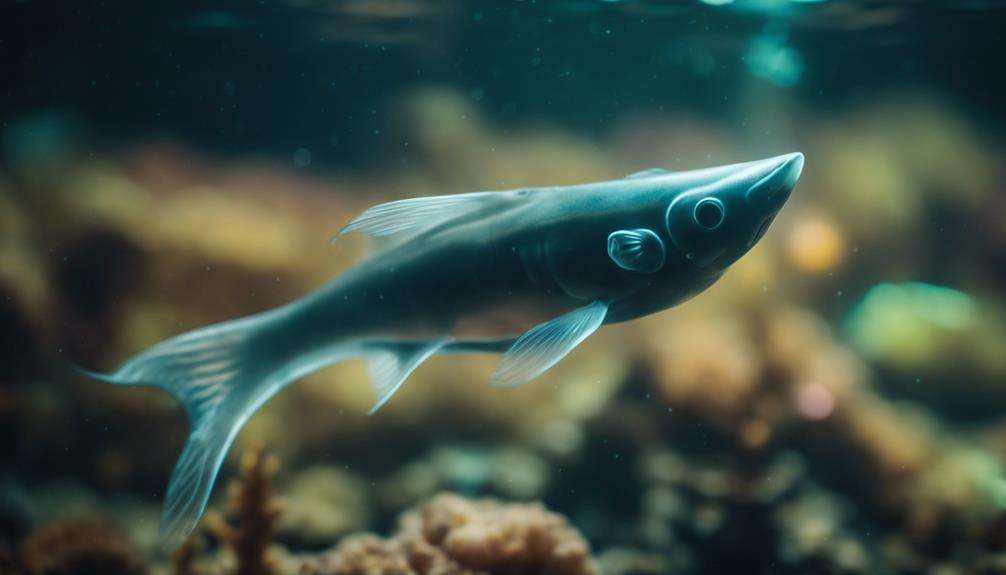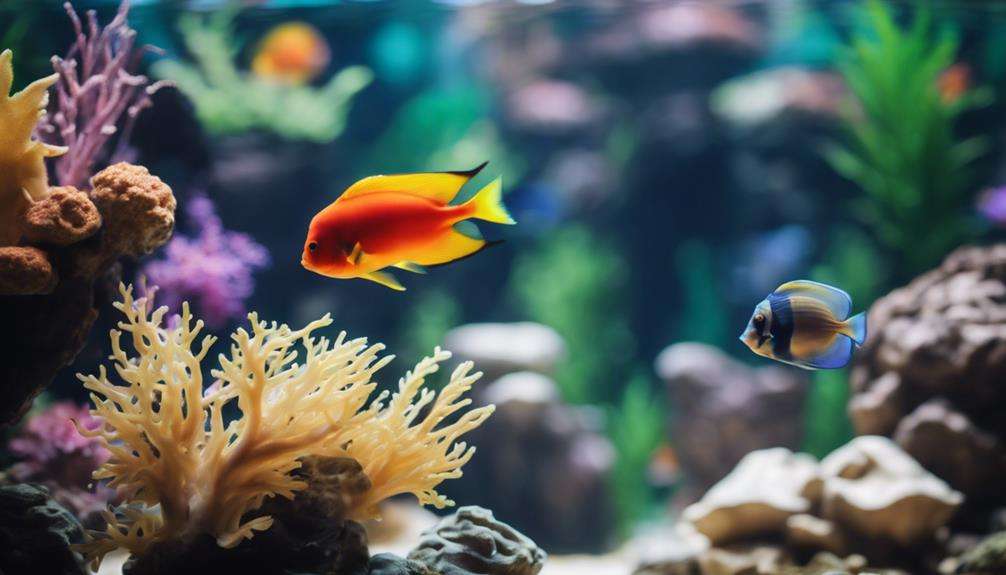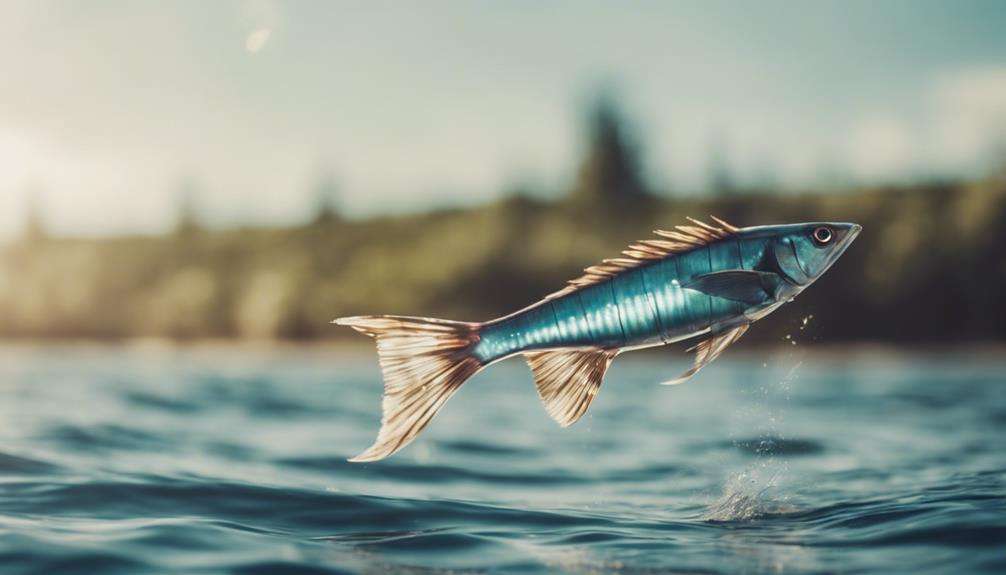Have you ever considered the intriguing adaptations that set deep-sea hatchetfish types apart from other marine species?
Their uncanny ability to blend seamlessly into the darkness of the ocean's depths through bioluminescent features is just the beginning of their remarkable qualities.
As you explore further, you will uncover a world of unique physical traits, fascinating feeding strategies, and intricate survival mechanisms that make these hatchetfish types truly exceptional.
Each aspect contributes to their distinctiveness in ways that continue to captivate researchers and enthusiasts alike.
Key Takeaways
- Unique physical adaptations like blade-like bodies and large eyes aid hatchetfish in deep-sea survival.
- Bioluminescent features enable hatchetfish to camouflage, communicate, and navigate efficiently in dark depths.
- Varied species characteristics, vulnerabilities to predation, and conservation needs highlight the hatchetfish's significance in marine ecosystems.
- Specialized feeding strategies, elusive reproductive habits, and nightly migrations for food underscore the hatchetfish's distinctive traits.
Unique Physical Adaptations
Deep-sea hatchetfish exhibit remarkable physical adaptations that enable them to thrive in the challenging environment of the ocean depths. Their blade-like body structure is a key feature that aids in their swift movement through the water. This streamlined design allows them to navigate efficiently, conserving energy in the dimly lit deep-sea realm. Coupled with their large, upward-facing eyes, which are adapted for spotting prey in the darkness, hatchetfish have a unique advantage in their deep-sea habitat.
Moreover, the bioluminescent lights present on their bellies serve a dual purpose. Not only do these pale blue lights help hatchetfish camouflage and blend in with the surrounding environment, but they also play a crucial role in communication and attracting prey. Interestingly, hatchetfish can regulate the intensity of these bioluminescent lights, allowing for adjustments in focus on objects at different distances. This adaptability showcases the sophisticated nature of their bioluminescent features, enhancing their survival in the depths despite the constant threat of predation from larger fish like lancetfish and tuna.
Bioluminescent Features
Deep-sea hatchetfish possess specialized photophores that emit bioluminescent light, a feature crucial for their survival in the dark ocean depths. These light organs are strategically positioned to aid in counterillumination, allowing hatchetfish to blend in with the ambient light and evade predators.
The bioluminescent patterns exhibited by hatchetfish might also serve a purpose in their courtship rituals, highlighting the multifaceted role of light production in these fascinating deep-sea creatures.
Light-Producing Organs
The light-producing organs found in hatchetfish, known as photophores, serve a crucial role in their survival and communication strategies in the depths of the ocean. These photophores emit bioluminescent light, aiding hatchetfish in their camouflage efforts. Positioned facing downwards, the light helps with counterillumination, making hatchetfish nearly invisible when viewed from below.
Beyond camouflage, bioluminescence also plays a significant part in courtship and communication among deep-sea hatchetfish. Each species of hatchetfish has its distinct patterns of light emission, allowing for species-specific signaling. The intricate design and function of these photophores enable hatchetfish to navigate the dark depths with remarkable efficiency and effectiveness, showcasing the fascinating adaptations of these deep-sea dwellers.
Camouflage in Darkness
In the dimly lit depths of the ocean, the bioluminescent features of hatchetfish play a vital role in their ability to blend seamlessly with the surrounding darkness, ensuring effective camouflage against predators.
These fish possess light-producing organs called photophores that emit bioluminescent light, aiding in their camouflage strategy known as counterillumination. The ability to adjust the intensity and color of their bioluminescent glow allows hatchetfish to match their environment accurately, remaining hidden from predators.
Additionally, the downward-pointing photophores on hatchetfish create a glow that mirrors the light filtering down from above, rendering them nearly invisible when viewed from below. This bioluminescence is a crucial adaptation for hatchetfish, enabling them to evade detection and ambush prey effectively.
Survival in Deep-Sea
Utilizing intricate bioluminescent features, hatchetfish in the depths of the ocean employ a sophisticated camouflage strategy for survival. These deep-sea fishes use bioluminescent counterillumination to blend seamlessly with the ambient light, effectively concealing themselves from predators.
The presence of photophores along their bodies allows hatchetfish to match the light filtering down from above, making them nearly invisible when viewed from below. Moreover, the downward-pointing light organs located on their bellies aid in avoiding detection by potential threats lurking beneath them.
This remarkable adaptation not only helps hatchetfish evade predators but also likely serves additional purposes such as courtship displays and communication within their dark, deep-sea habitat. The bioluminescent prowess of hatchetfish plays a crucial role in their survival and thriving in the depths of the ocean.
Feeding Strategies and Diet
Adapted to the deep-sea's low light conditions, deep-sea hatchetfish types display a unique feeding strategy and diet focused on tiny crustaceans and animal plankton. These deep-sea creatures have evolved specialized techniques to thrive in their challenging environment, ensuring their survival and contributing to the ecosystem.
Here are some fascinating insights into the feeding habits of deep-sea hatchetfish types:
- Night Migration: Deep-sea hatchetfish types undertake nightly migrations to shallower waters where food sources like plankton and small fish are more abundant.
- Visual Predation: With their large, protruding eyes, hatchetfish can detect prey silhouettes moving above them, aiding in efficient hunting in the dimly lit deep-sea environment.
- Dietary Importance: The diet of deep-sea hatchetfish is crucial not only for their individual survival but also for maintaining the delicate balance within the deep-sea ecosystem, highlighting the significance of their feeding strategies.
Deep-Sea Habitat Survival
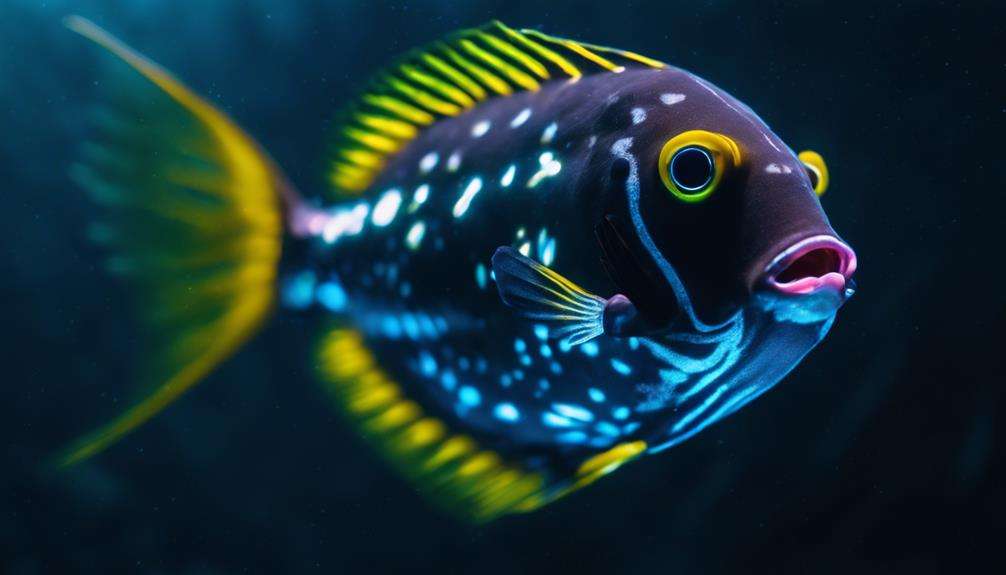
In the dark depths of the ocean, deep-sea hatchetfish exhibit remarkable adaptations for survival. Their bioluminescent organs serve as a form of camouflage, allowing them to blend seamlessly with the faint light that penetrates the depths.
These specialized features enable hatchetfish to navigate, hunt, and evade predators in the challenging conditions of the deep-sea habitat.
Adaptations for Darkness
In the depths of the ocean realm, deep-sea hatchetfish exhibit remarkable evolutionary strategies to thrive in perpetual darkness. These fish have evolved fascinating adaptations for darkness:
- Bioluminescent Organs: Deep-sea hatchetfish possess specialized bioluminescent organs that aid in counterillumination, allowing them to blend seamlessly with the faint light present in the deep ocean.
- Regulation of Bioluminescence: They can adjust the intensity and color of their bioluminescent light, aiding in staying hidden from potential predators.
- Low Light Vision: Hatchetfish have eyes adapted for low light conditions, enabling them to detect the silhouettes of prey moving above them with precision.
Bioluminescent Camouflage
Deep-sea hatchetfish master the art of bioluminescent camouflage as a survival strategy in their dark, abyssal habitat. Through a technique known as counterillumination, these fascinating creatures use specialized light-emitting organs called photophores to emit light that matches the ambient light in their environment. By doing so, they effectively hide from predators lurking below them in the depths of the ocean.
The photophores help the hatchetfish blend seamlessly with the faint glow of the ocean's surface, making them nearly invisible when observed from beneath. This bioluminescent camouflage isn't just a remarkable adaptation; it's a crucial survival mechanism that allows deep-sea hatchetfish to thrive in the challenging conditions of their habitat.
Reproductive Peculiarities
Revealing intriguing reproductive peculiarities, deep-sea hatchetfish challenge researchers due to their elusive nature and unique habitat. The reproductive habits of these fish remain mostly unknown, shrouded in mystery by the depths they inhabit. Juvenile hatchetfish exhibit distinct physical traits from adults, hinting at a complex life cycle yet to be fully understood. Their short lifespan, potentially less than a year, adds urgency to unraveling their reproductive strategies.
Despite occasional migration to shallower waters for feeding at night, the specific behaviors linked to reproduction elude scientific comprehension. Scientists are diligently investigating these enigmatic creatures to decipher the intricacies of their reproductive cycle and the survival mechanisms they employ.
- The elusive nature of deep-sea hatchetfish complicates the study of their reproductive habits.
- Juvenile hatchetfish display physical variances compared to adults, contributing to the mystery surrounding their life cycle.
- The short lifespan of deep-sea hatchetfish, possibly less than a year, impacts their reproductive strategies.
Species Variability and Diversity
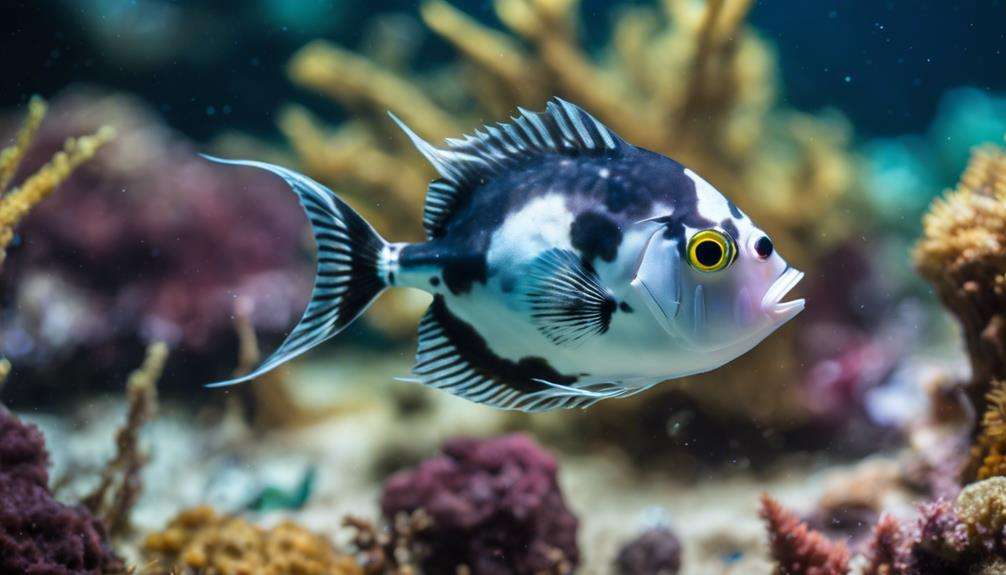
Challenging researchers with their elusive nature and unique habitat, the deep-sea hatchetfish types demonstrate a remarkable species variability and diversity, comprising approximately 40 distinct species, each with its own set of unique characteristics and adaptations.
Among these variations are differences in physical traits such as size, which ranges from small species measuring around 2.8cm to larger ones reaching up to 12cm in length. Additionally, hatchetfish species showcase diverse body shapes, bioluminescent patterns, and eye adaptations tailored to their deep-sea environment.
These eye adaptations are particularly fascinating, as they allow different species to thrive in the low light conditions of the deep ocean. Understanding the intricacies of species variability among deep-sea hatchetfish sheds light on their evolutionary success and specialized survival strategies, making them a subject of great interest for researchers seeking to unravel the mysteries of the ocean depths.
Predation and Defense Mechanisms
Utilizing their unique bioluminescent defense mechanisms, deep-sea hatchetfish employ sophisticated strategies to evade predation in their challenging underwater habitat. These small, silvery fish face constant threats from larger predators like lancetfish and tuna, driving the evolution of their remarkable survival tactics. Here's how hatchetfish navigate the perilous waters:
- Bioluminescent Brilliance: Through specialized light-producing organs called photophores, hatchetfish engage in counterillumination. By emitting light downwards to match the ambient light from above, they effectively blend into the luminous environment, evading detection from predators lurking below.
- Camouflaging Artistry: Hatchetfish master the art of disguise by adjusting the intensity of their bioluminescent glow. This adaptive camouflage allows them to seamlessly merge with the ever-shifting light patterns, further enhancing their ability to remain unseen in the vast depths.
- Persistent Vulnerability: Despite their advanced defense mechanisms, hatchetfish remain vulnerable to predation due to their diminutive size and the presence of formidable predators in their habitat. The delicate balance between survival and predation underscores the ongoing evolutionary arms race in the mysterious realm of the deep sea.
Conservation Concerns and Efforts
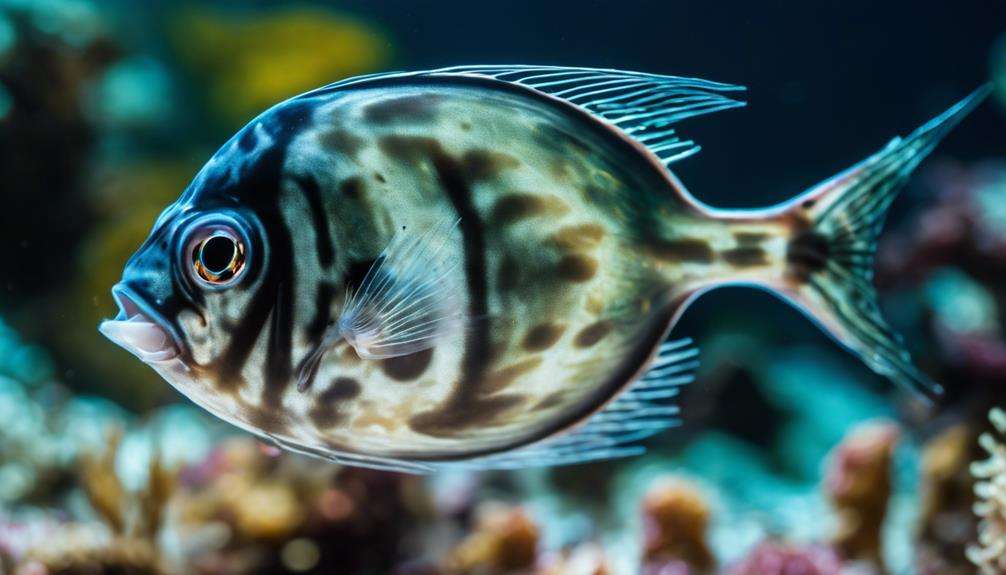
In light of the ongoing evolutionary arms race in the deep sea, the conservation of deep-sea hatchetfish hinges on addressing the escalating threats posed by human activities impacting their fragile habitat. Conservation concerns for these unique fish species stem from the detrimental effects of human actions on the deep-sea environment.
Changes in their habitat, induced by factors such as deep-sea mining, pollution, and climate change, pose significant challenges to the survival of hatchetfish populations. Efforts to preserve these mesmerizing creatures necessitate a focus on ocean conservation initiatives that aim to protect the delicate balance of deep-sea ecosystems they inhabit.
Frequently Asked Questions
What Are the Cool Facts About the Deep Sea Hatchetfish?
You'll be amazed by the deep-sea hatchetfish! They boast bioluminescent camouflage, unique feeding habits, and extreme pressure adaptations. Their ability to blend in with light, hunt effectively, and withstand intense pressures makes them extraordinary creatures of the deep.
Why Are Hatchetfish Shaped Like That?
You might wonder why hatchetfish are shaped like that. Well, their unique form is an extraordinary example of evolutionary adaptation. This blade-like structure enhances their hydrodynamic efficiency, aiding in swift movement and providing visual camouflage in the deep-sea environment.
How Deep Do Deep Sea Hatchetfish Live?
At depths ranging from 600 to 4,500 feet, deep-sea hatchetfish thrive with adaptations for low light. Their bioluminescence aids in camouflage from predators. These fish migrate to shallower waters at night for food, returning to the deep ocean at daybreak.
What Is the Difference Between a Common Hatchetfish and a Silver Hatchetfish?
In color variations, common hatchetfish are silvery, while silver hatchetfish have a darker hue. Common hatchetfish prefer a worldwide deep-water habitat, while silver hatchetfish inhabit temperate and tropical seas. Both species display unique feeding behaviors.
Conclusion
In conclusion, the deep-sea hatchetfish types are like elusive stars in the ocean's vast darkness, their bioluminescent glow illuminating the mysteries of the deep.
Their unique physical adaptations and behaviors make them a marvel of evolution, perfectly suited for surviving in the unforgiving depths.
As essential inhabitants of the deep-sea ecosystem, they serve as a beacon of resilience and adaptation in the ever-changing underwater world.
